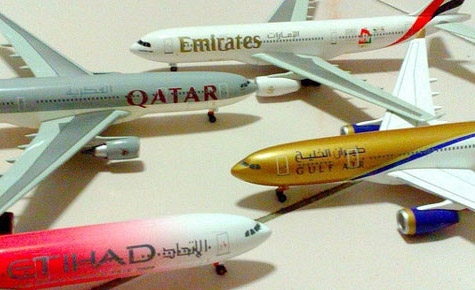Middle East carriers experienced the strongest traffic growth at 11.2 per cent year-over-year, although this was surpassed by a 12.4 per cent rise in capacity, despite a slower global growth in both air travel and freight, the International Air Transport Association (Iata)'s global traffic results for July showed.
Middle East carriers recorded 16% increase
Air freight demand contracted 3.2 per cent compared to July 2011 but was unchanged compared to June. Middle East carriers recorded a 16 per cent increase in demand year-on-year but all other markets experienced declines and the small recovery seen since the end of 2011 has stagnated.
July passenger demand in aggregate was 3.4 per cent higher than the same month last year, compared to a 6.3 per cent increase in June and average growth of 6.5 per cent over the first half of the year. This slowdown in travel growth is being driven largely by the recent fall in business confidence in many economies.
July freight demand was 3.2 per cent lower than it was in the same month last year. This is down on the 0.1 per cent year-on-year growth rate of June. A large part of that decline was due to a comparison with a relatively strong July last year, but overall the trend in air freight is weak, in line with subdued world trade growth.
In July passenger capacity rose 3.6%
Airlines have responded to this slower growth environment by reducing the capacity added to markets, a move which has stabilized load factors at relatively high levels and provided some support for profitability in the face of high fuel prices. In July passenger capacity rose 3.6 per cent, in line with the expansion of traffic, keeping the load factor at a relatively high 83.1 per cent.
July international passenger demand was up 3.5 per cent compared to the year-ago period, exactly in line with a 3.5 per cent expansion in capacity. Load factors stood at 83.3 per cent.
Khaleej Times
31 August























































